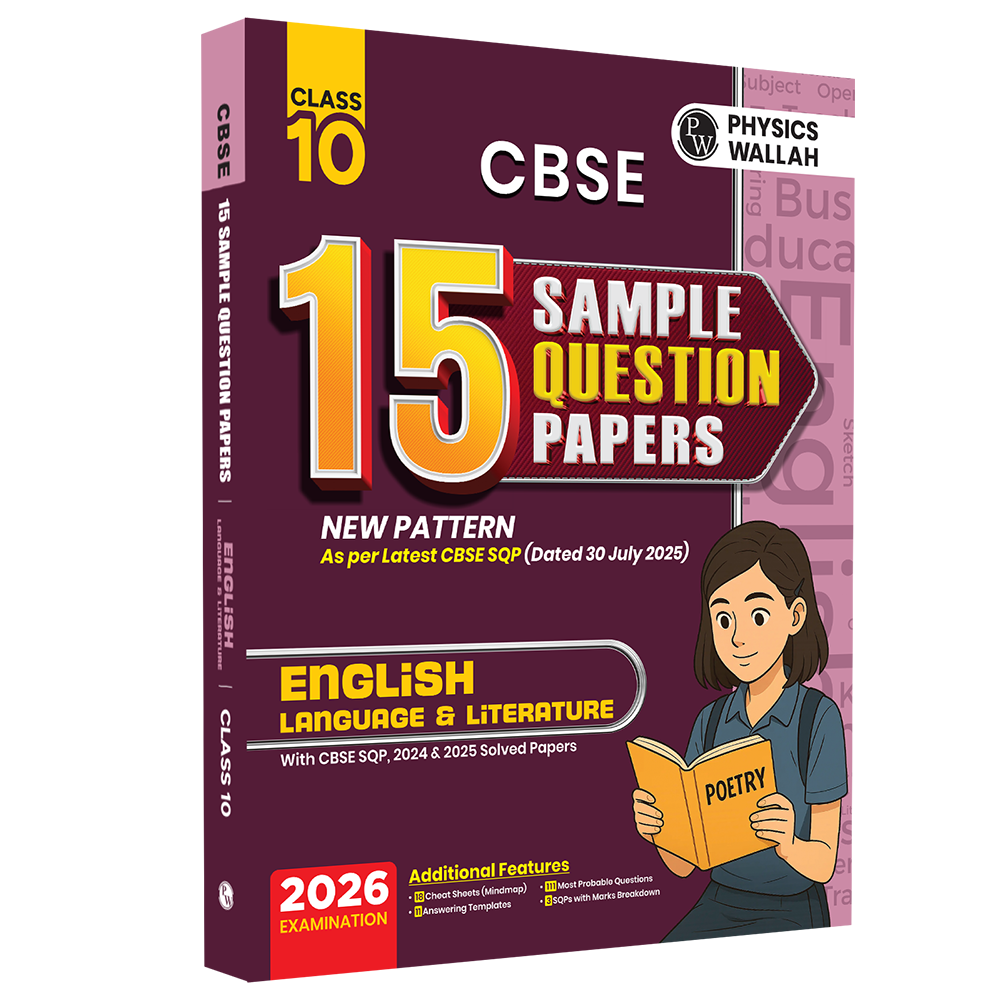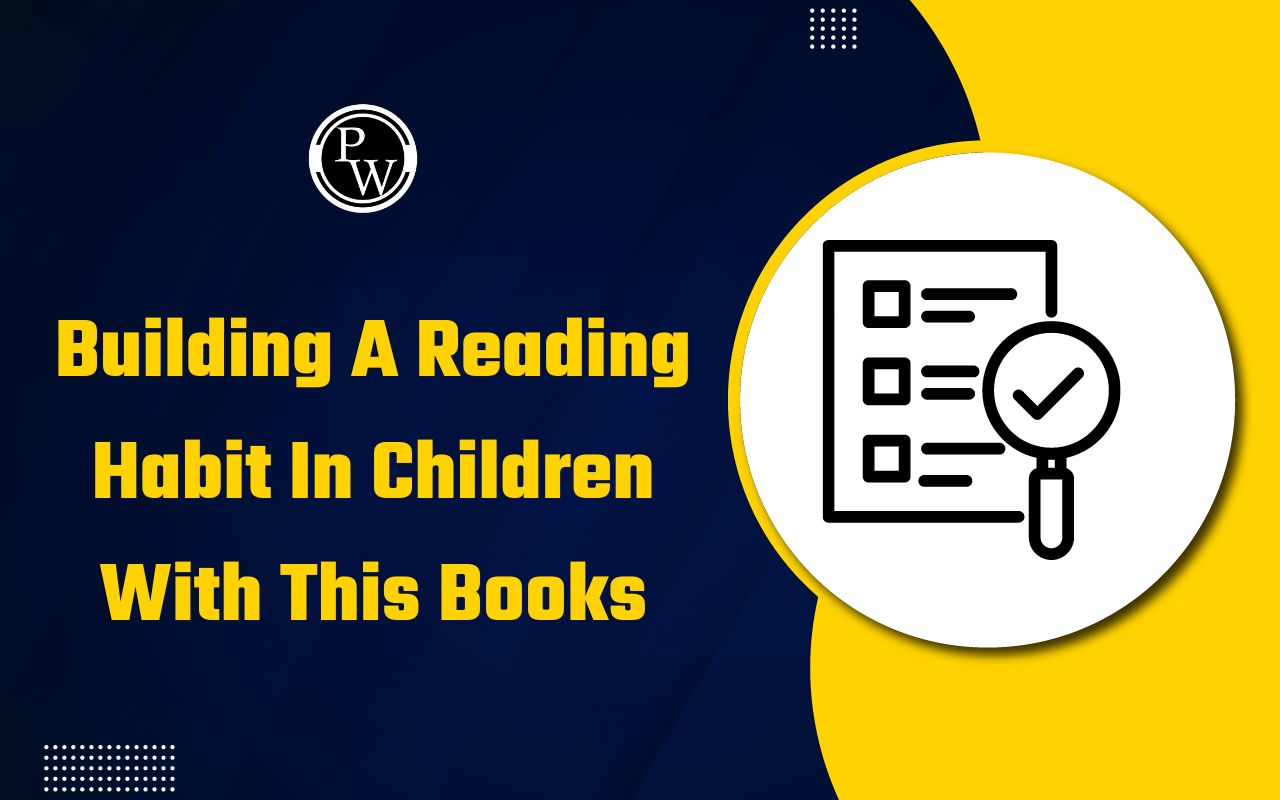NCERT Solutions for Class 10 English Footprints without Feet Chapter 6 The Making of a Scientist

NCERT Solutions for Class 10 English Footprints without Feet Chapter 6, The Making of a Scientist, provide detailed and easy-to-understand answers to all the textbook questions based on the life and journey of Richard Ebright, a brilliant young scientist. This chapter not only highlights his curiosity and dedication but also inspires students to follow their passion for science.
With our well-structured The Making of a Scientist questions and answers, students can strengthen their understanding of the story, improve their writing skills, and perform better in exams. The Making of a Scientist question answer sets are designed to clarify concepts and ensure students grasp both the moral and factual elements of the lesson.
Check Out: CBSE Class 10th Books
NCERT Solutions for Class 10 English Footprints without Feet Chapter 6
1. How did a book become a turning point in Richard Ebright’s life?
Richard Ebright indulged in his interest in collecting butterflies. By the time he reached second grade, he had collected all twenty-five species of butterflies found in his hometown. At this moment, his collection of butterflies would have ended. By this time, however, his mother had given him a book titled "The Travels of Monarch X". He learned about the journey of the monarch butterfly to Central America from this book. This book introduced him to science and sparked his interest in monarch butterflies. For Richard Ebright, this turned out to be a turning point in his life. In his basement, he began to raise monarch butterflies and study them at different stages of their lives.
2. How did his mother help him?
Richard Ebright was helped by his mother, who encouraged his curiosity. She purchased him telescopes, microscopes, cameras, mounting supplies, and other equipment, went on vacation with him, and provided him with various forms of assistance. If he had nothing to do, she found things for him to learn. Even the book that marked a sea change in his life was given to him by his mother. Thus, it may be claimed that his mother had a major influence on his growth as a scientist.
Read More: NCERT Solutions for Class 10 English Footprints without Feet Chapter 1
3. What lesson does Ebright learn when he does not win anything at a science fair?
Ebright is aware that something is not always scientific just because it is on exhibit. It will take actual experiments for him to win a scientific fair.
4. What experiments and projects does he then undertake?
Most of Ebright's time had been devoted to studying butterflies, especially monarchs. That was the only thing that immediately sprang to mind for the fair the following year. He worked through the several ideas that Dr. Urquhart had given him, one by one. He set out to identify the source of a viral disease that every few years killed almost all monarch caterpillars. He tried raising caterpillars in the company of the disease-carrying beetles to achieve this. Even though the experiment didn't work out well, he still gained something from it. Later, he experimented to test the theory that viceroy butterflies mimic monarchs to evade avian predators.
5. What are the qualities that go into the making of a scientist?
Three attributes are necessary for becoming a scientist, according to the author: curiosity, mental acuity, and a strong desire to succeed for the right reasons. Richard Ebright was an extraordinarily gifted student. Among his many talents were photography, canoeing, public speaking, and debating. He was constantly prepared to go above and above. He was courteous yet competitive. He was intelligent and showed a deep interest right away, which is what inspired him to come up with the idea of cell life.
Read More: NCERT Solutions for Class 10 English Footprints Without Feet Chapter 2
Think About It
1. How can one become a scientist, an economist, a historian…? Does it simply involve reading many books on the subject? Does it involve observing, thinking, and doing experiments?
It takes more than merely reading books to learn. This is an endeavor to obtain information. The level of learning is based on how your brain interprets the data. Strong curiosity and an unquenchable thirst for knowledge are the first and most crucial requirements for becoming a genius in one's chosen field.
A sharp sense of observation is the next requirement, which enables you to connect your conclusions to what you observe or encounter in the actual world. To validate your findings against a range of factors and in real-world circumstances, experiments are necessary. Finally, but just as importantly, you need to be driven to work hard in your area of interest.
2. You must have read about cells and DNA in your science books. Discuss Richard Ebright’s work in light of what you have studied. If you get an opportunity to work like Richard Ebright on projects and experiments, which field would you like to work in and why?
There is a clear biological connection to Ebright's findings. Understanding the anatomy of a cell has helped scientists better grasp how organisms develop and function. This has helped scientists better understand how microorganisms that cause disease attack and proliferate within human systems. They must have gained insight on how to treat a particular illness from this. Police use DNA fingerprinting to help them find the real offender.
This was not conceivable after DNA was discovered. One amazing example of a little animal that travels thousands of kilometers from North America to the Amazon rainforest is the monarch butterfly. Maybe in the future, we'll be able to create a navigation system just as dependable and strong as monarch butterflies.
Read More: NCERT Solutions for Class 10 English Footprints Without Feet Chapter 3
Talk About It
1. Children everywhere wonder about the world around them. The questions they ask are the beginning of the scientific inquiry. Given below are some questions that children in India have asked Professor Yash Pal and Dr Rahul Pal, as reported in their book, Discovered Questions (NCERT, 2006).
(i) What is DNA fingerprinting? What are its uses?
DNA is the blueprint for life. A boy or a girl will always exhibit characteristics that may be traced back to both parents, making DNA fingerprinting an invaluable forensic method for parentage determination. To identify genes, a tiny drop of blood or a single hair strand can be employed. It's also frequently used in criminal investigations to establish the guilt or innocence of a murder suspect on the scene.
(ii) How do honeybees identify their honeycombs?
Insects with great intelligence, honeybees are adept at navigating and recognizing their surroundings. Their chemicals create paths that other honeybees can follow to locate their honeycomb. In addition, bees possess a method for measuring distance, a system for determining direction, and a form of pictorial memory that aids in the finding of their honeycombs.
Read More: NCERT Solutions for Class 10 English Footprints without Feet Chapter 4
(iii) Why does rain fall in drops?
Can you answer these questions? You will find Professor Yash Pal and Dr Rahul Pal’s answers (as given in Discovered Questions) on page 75.
Vapor condensation happens when the air temperature drops below the dew point. When a cloud's vapor cannot condense all at once, a large pool of water forms. Initially, the majority of raindrops are tiny ice crystals that gradually absorb moisture as they descend to lower altitudes. Eventually, they melt into water droplets and fall to Earth as rain.
2. You also must have wondered about certain things around you. Share these questions with your class and try to answer them.
Like many others, I've considered some of the changes that have occurred in my environment. I tried to consider their answers. These are the questions:
What makes the sky so blue?
What causes stars to twinkle?
What exactly is a rainbow?
Read More: NCERT Solutions for Class 10 English Footprints without Feet Chapter 5
Summary of The Making of a Scientist
“The Making of a Scientist” by Robert W. Peterson is a motivational biographical sketch of Richard H. Ebright, who grew up to become one of the leading scientists in the field of biology. The story traces his journey from a curious child to a successful scientist, showing how determination, hard work, and a supportive environment can lead to great achievements.
Richard Ebright was a very bright and curious child. From a young age, he showed a keen interest in learning and exploring the world around him. His mother played a significant role in shaping his scientific temper. She encouraged his curiosity by providing him with books, microscopes, telescopes, and other learning tools.
When he was in the second grade, she bought him a book titled The Travels of Monarch X, which sparked his interest in butterflies. This book led him to start collecting butterflies, a hobby that became the foundation of his early scientific experiments.
Ebright took his passion further by conducting detailed studies and entering science fairs. Although he faced failures initially, he never gave up. He learned from his mistakes and gradually improved his research skills. One of his most notable achievements was discovering how cells work and how a hormone can control the functioning of cells, this discovery became the basis for important medical research later on.
The chapter also highlights that Ebright was not only intelligent but also disciplined and determined. He was a dedicated learner who believed in the value of research, observation, and consistent effort. His curiosity and desire to find answers to questions were the driving forces behind his scientific success.
Throughout the story, Ebright is shown as a role model for students. He is an example of how one’s passion, supported by hard work and guidance, can lead to outstanding accomplishments. The chapter ends with the idea that traits like curiosity, the will to win, and the habit of doing one's best are essential for the making of a true scientist.
Check Out: CBSE Class 10th Question Banks
Benefits of solving NCERT Solutions for Chapter 6
-
Helps You Understand the Story Better: The solutions explain the chapter, The Making of a Scientist Class 10, clearly and easily, so you can understand it quickly.
-
Teaches You How to Write Good Answers: By practising the Making of a Scientist question answer, you learn how to write answers properly for your exams.
-
Useful for Quick Revision: These solutions are great for quick revision and help you go through all the important points without reading the whole chapter again.
-
Makes You Ready for the Exam: Regular practice boosts your confidence and helps you feel prepared to answer any question from The Making of a Scientist Class 10.
-
Gives Correct Answers to All Questions: The solutions cover all textbook questions with correct answers, so you don’t miss anything while preparing the Making of a Scientist chapter.
Also Check, CBSE Class 10th Previous Year Papers
The Making of a Scientist FAQs
1. Who is the main character in "The Making of a Scientist"?
The main character is Richard H. Ebright, a renowned scientist known for his research in the field of biology.
2. What sparked Richard Ebright's interest in science?
Richard's interest in science was sparked when his mother bought him the book The Travels of Monarch X, which led him to start collecting butterflies.
3. What was Richard Ebright's first scientific hobby?
His first scientific hobby was collecting butterflies, which he pursued with great passion.
4. How did Richard Ebright contribute to the field of science?
Richard Ebright made important discoveries in biology, particularly his research on how cells work and how hormones control cell functioning.
5. What was Ebright's most significant scientific achievement?
Ebright's most significant achievement was his discovery about the hormone that controls the process of cell functioning, a finding that contributed to important medical research.











